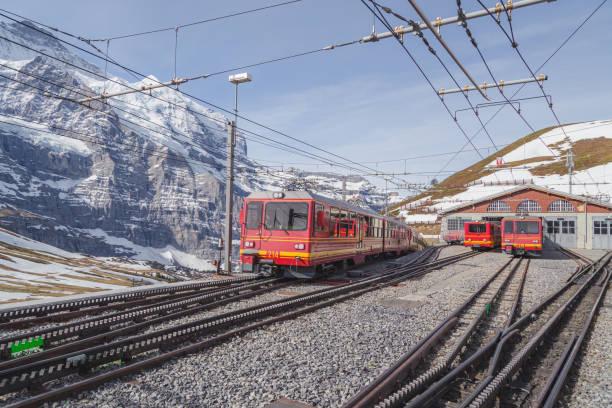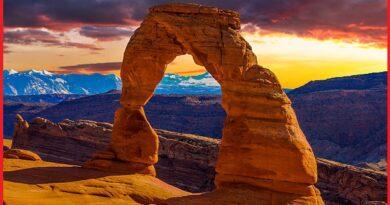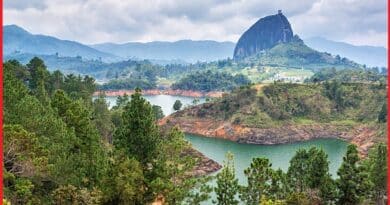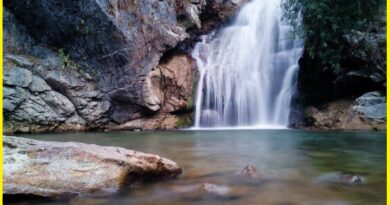Jungfraujoch Switzerland Adventures and Interesting fact
Jungfraujoch Switzerland
Jungfraujoch is a famous tourist destination in Switzerland, located in the Bernese Alps. It is known for being the highest railway station in Europe, situated at an altitude of 3,454 meters above sea level. To get to Jungfraujoch Switzerland, visitors take a scenic cogwheel train from the base station in Kleine Scheidegg, which passes through tunnels inside the Eiger and Mönch mountains. The train journey is one of the highlights of the trip, as it offers stunning views of the surrounding mountains, glaciers, and valleys.
At the top of the mountain, travelers can explore a range of attractions, including the Sphinx Observatory, the Ice Palace, and the Alpine Sensation exhibition. The Sphinx Observatory is a research station run by the Swiss Federal Institute of Technology, and visitors can go up to its terrace to get a panoramic view of the surrounding peaks. The Ice Palace is a series of tunnels and chambers carved out of the glacier, where visitors can see ice sculptures and exhibits on glaciers and climate change. The Alpine Sensation exhibition is a multimedia experience that showcases the history of the Jungfrau Railway and the development of the Alps. Visitors to Jungfraujoch Switzerland can also enjoy various outdoor activities such as skiing, snowboarding, and hiking. There are several restaurants and cafes at the top, offering a range of Swiss and international cuisine.
Jungfraujoch Mountain Range
Jungfraujoch is a mountain in the Bernese Alps, Switzerland. Jungfraujoch Mountain geology- The geology of Jungfraujoch is complex and fascinating, shaped by millions of years of geological processes. Jungfraujoch Switzerland is located in the Swiss Alps and it is formed as a result of the collision of the African and Eurasian tectonic plates. The rocks in the Jungfrau region are primarily sedimentary and were formed in a shallow sea during the Jurassic period, which lasted from about 201 to 145 million years ago. These sedimentary rocks are primarily limestones, shales, and sandstones, and are rich in fossils of marine organisms such as ammonites and bivalves.

During the Alpine orogeny, which began about 30 million years ago and continues to this day, the rocks in the Jungfrau region were uplifted and deformed. This resulted in the formation of folds and faults, which are visible in the landscape around Jungfraujoch. The most prominent mountains in the region, including the Eiger, Mönch, and Jungfrau, were formed as a result of this uplift.
Glaciers have also played a significant role in shaping the landscape around Jungfraujoch. During the last ice age, which ended about 10,000 years ago, glaciers covered much of the Alps, including the Jungfrau region. The glaciers carved out valleys and cirques and left behind moraines and other glacial deposits. Today, the Aletsch Glacier, the largest glacier in the Alps, can be seen from Jungfraujoch. The glacier is over 23 kilometers long and covers an area of about 81 square kilometers.
Also read- Triassic Beds of Lake Lugano and Ticino In Switzerland
The History of Jungfraujoch Switzerland
The history of Jungfraujoch dates back to the late 19th century when a Swiss entrepreneur, Adolf Guyer-Zeller, envisioned a railway line that would connect the towns of Grindelwald and Lauterbrunnen in the Bernese Alps. The construction of the railway line started in 1896, and it took 16 years to complete due to the challenging terrain and harsh weather conditions. The railway line was built in three sections, the first connecting Grindelwald to Kleine Scheidegg in 1898, the second from Lauterbrunnen to Wengen in 1893, and the final section from Kleine Scheidegg to Jungfraujoch, which was completed in 1912.
The construction of the railway line was a remarkable engineering feat, as it involved building tunnels through the mountains and over steep slopes. The most challenging part of the project was the construction of the tunnel through Eiger mountain, which took almost six years to complete and claimed the lives of many workers due to harsh working conditions and accidents.

Once the railway line was completed, Jungfraujoch became a popular tourist destination, attracting visitors from all over the world. Over the years, various attractions were added to the site, including the Sphinx Observatory, the Ice Palace, and the Alpine Sensation exhibition, making it one of the most visited tourist destinations in Switzerland. Jungfraujoch remains a testament to Swiss engineering and innovation and a popular tourist attraction, offering visitors breathtaking views of the surrounding mountains and valleys, as well as a unique experience of being at the top of Europe.
What are Some Activities Near Jungfraujoch?
There are many activities near Jungfraujoch that visitors can enjoy, both in summer and winter. Some popular activities are- Hiking-There are many hiking trails in the surrounding area, offering stunning views of the mountains and valleys. Some popular hikes include the Eiger Trail, the Männlichen Royal Walk, and the Panorama Trail.
Skiing and Snowboarding- Jungfrau region is a popular destination for winter sports, with over 200 kilometers of ski slopes and 44 lifts. There are many ski resorts nearby, including Grindelwald, Wengen, and Mürren.
Sledging- Sledging is a fun and thrilling activity that visitors can enjoy in winter. The longest sledging run in Europe is located in the nearby town of Grindelwald, offering a 15-kilometer run with stunning views of the Eiger, Mönch, and Jungfrau mountains.
Paragliding- Paragliding is a popular activity in the region, offering breathtaking views of the mountains and valleys. There are many paragliding operators in the area, offering tandem flights for visitors.

Scenic Train Rides- Visitors can enjoy scenic train rides to nearby towns and villages, such as Grindelwald, Wengen, and Lauterbrunnen. The train rides offer stunning views of the mountains and valleys.
Mountain Biking-Mountain biking is a popular activity in the area, with many trails and routes available. Visitors can rent bikes from local shops and explore the trails on their own.
Visit Interlaken- Interlaken is a nearby town located between two lakes, offering a range of activities such as boat tours, shopping, and dining. Visitors can take a train or bus from Jungfraujoch to Interlaken.
What are the Best Views at Jungfraujoch?
Jungfraujoch Switzerland offers some of the most breathtaking views of the Swiss Alps, and there are many vantage points from which visitors can enjoy the scenery. Some of the best views at Jungfraujoch are- Sphinx Observatory- The Sphinx Observatory is located at the top of Jungfraujoch, at an altitude of 3,572 meters above sea level. Visitors can take an elevator to the top of the observatory, where they can enjoy panoramic views of the surrounding mountains and valleys. Aletsch Glacier- The Aletsch Glacier is the largest glacier in the Alps, and visitors can enjoy stunning views of it from various vantage points at Jungfraujoch. The glacier can be seen from the Sphinx Observatory, as well as from the nearby Plateau.
Jungfraujoch Ice palace-The Jungfraujoch Ice Palace is a popular attraction located at the highest railway station in Europe, situated at an altitude of 3,454 meters above sea level. The ice palace is a series of tunnels and chambers carved out of the Aletsch Glacier, the largest glacier in the Alps. Ice palace can explore the tunnels and chambers and see various ice sculptures and exhibits related to glaciers and climate change. The ice palace is a unique experience, as visitors get to see first-hand the beauty and fragility of glaciers and the impact of climate change on this natural wonder.

The ice sculptures in the palace are created by a team of international artists who work on-site to create intricate designs that reflect the beauty of the glacier. The temperature inside the ice palace remains constant throughout the year, hovering around -3 degrees Celsius, making it a cold but fascinating experience. Visitors to the ice palace are advised to wear warm clothing and sturdy shoes, as the floor can be slippery due to the ice. The palace is open year-round, and admission is included in the ticket price for the Jungfraujoch railway journey.
Panorama Terrace-The Panorama Terrace is located near the Sphinx Observatory and offers stunning views of the surrounding mountains, including the Eiger, Mönch, and Jungfrau. Jungfraujoch Plateau- The Jungfraujoch Plateau is a flat area near the railway station, and visitors can enjoy panoramic views of the surrounding mountains and valleys. The plateau is also home to the Alpine Sensation exhibition, which offers an immersive experience of the history and culture of the Jungfrau region.
How to Get to Jungfraujoch Switzerland?
Jungfraujoch Switzerland is located in the Jungfrau region of Switzerland and is accessible by train. Interlaken is the gateway to the Jungfrau region and is easily accessible by train from major Swiss cities such as Zurich, Bern, and Geneva. There are also direct trains from major European cities such as Paris and Milan. From Interlaken, take a train to Kleine Scheidegg, which is a mountain pass located at an altitude of 2,061 meters (6,762 feet) above sea level. From Kleine Scheidegg, take the Jungfrau Railway to Jungfraujoch. Visitors can purchase tickets for the Jungfrau Railway at the train stations in Interlaken and Kleine Scheidegg, as well as online.



